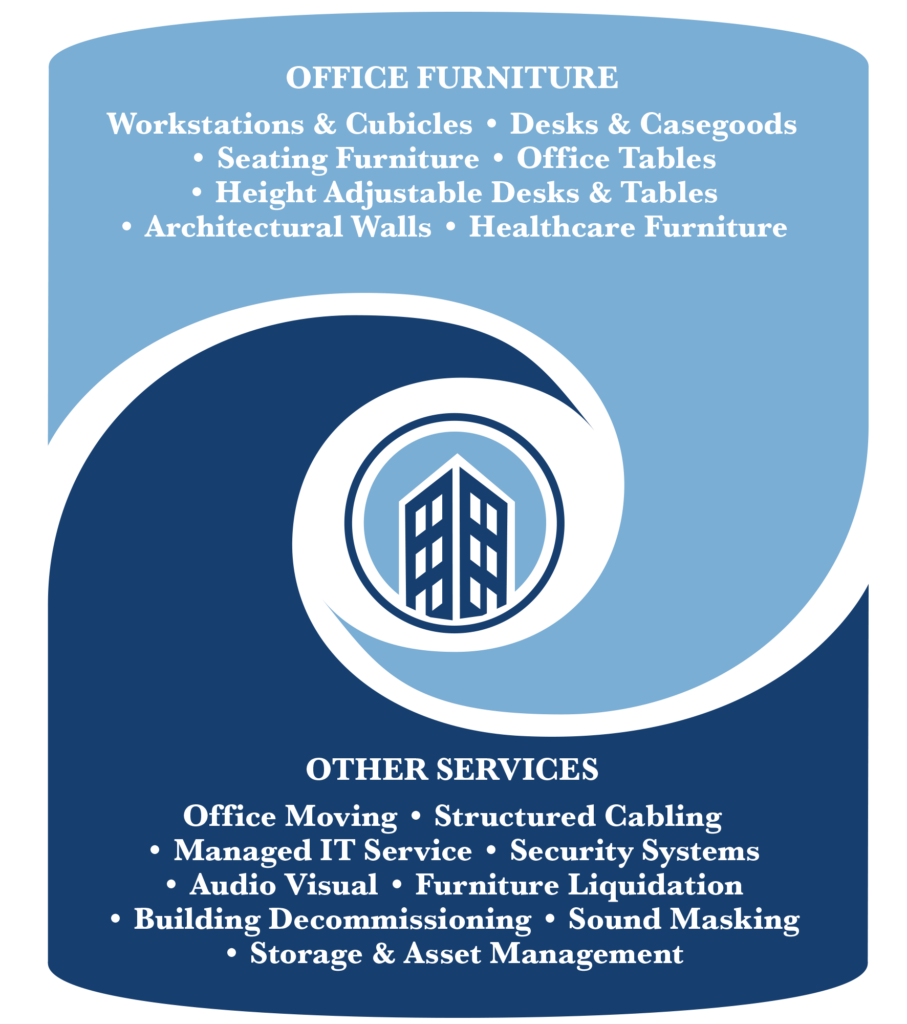18 Oct Office Privacy Solutions for Your Employees
In today’s modern workplace, office privacy solutions have become an increasingly important consideration for employers. As individuals spend a sizable portion of their day at work, it is crucial to provide an environment that fosters productivity, concentration, and respect for privacy. Workplace distractions have a very real impact on the bottom line. According to Business News Daily “businesses across America lose upwards of $650 billion per year due to employees being distracted during work hours.” (Distracted Workers Are Costing You Money – Updated Mar 28, 2023)
In this article, we will explore the importance of office privacy solutions for employees, common challenges to achieving it, and various strategies to create a work environment that promotes privacy.

The Importance of Office Privacy for Employees
 Office privacy solutions are not just a luxury for businesses to consider for employees; it is a fundamental need for employees to perform their best. This has never been truer for a sizable portion of the workforce as post-pandemic realities are becoming clearer each day. Between the growing return to office (RTO) requirements and the prevalence of split remote/office working accommodations, the issue of supplying privacy accommodations has never been more important for employers.
Office privacy solutions are not just a luxury for businesses to consider for employees; it is a fundamental need for employees to perform their best. This has never been truer for a sizable portion of the workforce as post-pandemic realities are becoming clearer each day. Between the growing return to office (RTO) requirements and the prevalence of split remote/office working accommodations, the issue of supplying privacy accommodations has never been more important for employers.
When employees have a sense of privacy, they feel more comfortable and secure, which enhances their overall job satisfaction and well-being. Privacy allows employees to focus on their tasks without distractions, fostering concentration and productivity. It also provides an opportunity for employees to recharge and take a break from the constant demands of the workplace.
Moreover, office privacy plays a significant role in maintaining confidentiality. Certain job roles require handling sensitive information, such as personal or financial data, and there are times when employees need a private space to ensure the privacy and security of such information. Without adequate privacy measures, employees may feel hesitant to discuss confidential matters, leading to potential breaches in data security.
Common Challenges to Achieving Office Privacy
 While office privacy is crucial, there are two primary challenges that employers often face when trying to create a private work environment. One common challenge is the prevalence of open office layouts, which are popular for fostering collaboration but can hinder privacy. Open floor plans with collaborative workstations or cubicles can greatly aid businesses in delivering their services and supporting clients. However, there can be challenges when moments of privacy are not just desired but are needed. Open office spaces often lack designated private areas, making it challenging for employees to have personal and private conversations. Additionally, the noise and distractions in open office environments can disrupt concentration and make it difficult for employees to focus on their tasks.
While office privacy is crucial, there are two primary challenges that employers often face when trying to create a private work environment. One common challenge is the prevalence of open office layouts, which are popular for fostering collaboration but can hinder privacy. Open floor plans with collaborative workstations or cubicles can greatly aid businesses in delivering their services and supporting clients. However, there can be challenges when moments of privacy are not just desired but are needed. Open office spaces often lack designated private areas, making it challenging for employees to have personal and private conversations. Additionally, the noise and distractions in open office environments can disrupt concentration and make it difficult for employees to focus on their tasks.
Another challenge is the lack of privacy policies and guidelines within organizations. Without clear guidelines, employees may not understand the expectations about privacy and may unintentionally violate each other’s boundaries. Moreover, technological advancements have introduced new challenges, such as the potential for digital surveillance and the blurring of personal and professional boundaries. Employers must address these challenges and create a balance between privacy and collaboration.
Designing an Office Layout that Promotes Privacy
To achieve office privacy, employers must carefully consider the office layout and design. While open office environments are prevalent, it is essential to incorporate private spaces within the layout. This can be achieved by creating dedicated rooms or conference areas for private conversations, meetings, or individual work. These private spaces should be easily accessible, well-equipped, and properly soundproofed to ensure confidentiality.
In addition to designated private spaces, employers can also consider implementing physical barriers like cubicles, partitions or even architectural walls. These structures help create a visual and physical separation between employees, supplying a sense of privacy while still allowing for collaboration when needed. Employers should also consider the placement of communal areas, such as break rooms or lounges, to ensure they are located away from workstations and provide a space for employees to unwind without interrupting others.
Implementing Privacy Policies and Guidelines
 Creating and implementing privacy policies and guidelines is essential to ensure that employees understand the expectations and boundaries about privacy in the workplace. These policies should clearly outline the company’s commitment to privacy, the types of information that require confidentiality, and the consequences of privacy breaches. It is also crucial to educate employees about the policies and provide regular training to reinforce the importance of privacy.
Creating and implementing privacy policies and guidelines is essential to ensure that employees understand the expectations and boundaries about privacy in the workplace. These policies should clearly outline the company’s commitment to privacy, the types of information that require confidentiality, and the consequences of privacy breaches. It is also crucial to educate employees about the policies and provide regular training to reinforce the importance of privacy.
Moreover, employers should encourage open communication and feedback regarding privacy concerns. Employees should feel comfortable reporting any breaches or violations without fear of retaliation. By fostering a culture of privacy and respect, employers can create an environment where employees feel their privacy is valued and protected.
Providing Private Spaces for Individual Work
 Individual workspaces are an integral part of office privacy. Employees need a designated area where they can concentrate on their tasks without distractions. Providing employees with private workstations,
Individual workspaces are an integral part of office privacy. Employees need a designated area where they can concentrate on their tasks without distractions. Providing employees with private workstations,
such as cubicles or individual offices, helps create a sense of ownership and privacy. These spaces should be designed to minimize noise and visual distractions, allowing employees to focus on their work and enhance productivity.
In addition to individual workstations, employers can also consider providing quiet rooms or areas where employees can retreat for focused work or to take a break. Even where office construction is limited or even prohibited, the advent of acoustic rooms aka ‘phone booths’ can over quick and easy opportunities to provide privacy. These spaces should be equipped with comfortable seating, adequate lighting, and soundproofing measures to ensure a peaceful environment for employees seeking privacy.
Utilizing Soundproofing and Noise-Cancelling Technologies
Noise can be a significant barrier to office privacy, particularly in open office environments. To address this challenge, employers can implement soundproofing measures and sound masking technologies. Soundproofing materials, such as acoustic panels or curtains, can help reduce noise transmission between workstations and create a quieter and more private atmosphere.
Additionally, sound masking technologies, such as headphones or ambient sound systems, can be provided to minimize distractions and create a more focused work environment. These technologies help employees tune out background noise and support their privacy even in a bustling office setting.
Balancing Privacy with Collaboration in Open Office Environments
While open office environments promote collaboration and teamwork, it is crucial to balance privacy needs within these spaces. Employers can achieve this by incorporating flexible furniture arrangements that allow for both collaborative and individual work. For example, movable partitions or screens can be used to create temporary private areas when needed.
 Employers should also encourage respectful communication practices within open office environments. This includes being mindful of noise levels, using designated private spaces for confidential discussions, and respecting others’ need for concentration. By promoting a culture of respect and consideration, employers can strike a balance between collaboration and privacy in open office settings.
Employers should also encourage respectful communication practices within open office environments. This includes being mindful of noise levels, using designated private spaces for confidential discussions, and respecting others’ need for concentration. By promoting a culture of respect and consideration, employers can strike a balance between collaboration and privacy in open office settings.
Monitoring and Addressing Privacy Concerns
Regularly monitoring and addressing privacy concerns is vital to creating a work environment that respects employees’ privacy. Employers can implement anonymous feedback systems or conduct surveys to gauge employees’ satisfaction with privacy measures. This feedback can help identify areas for improvement and address any privacy issues that may arise.
Furthermore, employers should be proactive in addressing privacy breaches or violations. Timely investigation, appropriate disciplinary actions, and clear communication about the consequences of privacy breaches can help support a culture of privacy and accountability within the organization.
Conclusion: Creating a Productive and Respectful Work Environment
 In conclusion, office privacy is a crucial aspect of creating a productive and respectful work environment. It enables employees to focus on their tasks, maintain confidentiality, and feel valued and respected. While there are challenges to achieving office privacy, employers can overcome them by designing office layouts that promote privacy, implementing privacy policies and guidelines, providing private spaces for individual work, using soundproofing technologies, balancing privacy with collaboration, and monitoring and addressing privacy concerns.
In conclusion, office privacy is a crucial aspect of creating a productive and respectful work environment. It enables employees to focus on their tasks, maintain confidentiality, and feel valued and respected. While there are challenges to achieving office privacy, employers can overcome them by designing office layouts that promote privacy, implementing privacy policies and guidelines, providing private spaces for individual work, using soundproofing technologies, balancing privacy with collaboration, and monitoring and addressing privacy concerns.
By prioritizing office privacy solutions, employers can enhance employee satisfaction, productivity, and overall well-being, leading to a more successful and harmonious workplace.
MyOffice has over 20 years of experience in supporting client’s implementing office solutions. We understand the needs of the modern office environment and the available solutions for employers to implement privacy solutions. To learn more about creating an office environment that promotes privacy and productivity, contact us for personalized advice.

Office privacy is a vital concern for the modern workplace. Understanding the options and being proactive is the first step to addressing the concern and creating a workplace where employees will thrive. If you need assistance with privacy solutions or any other office environment concern, we make it easy to address….
